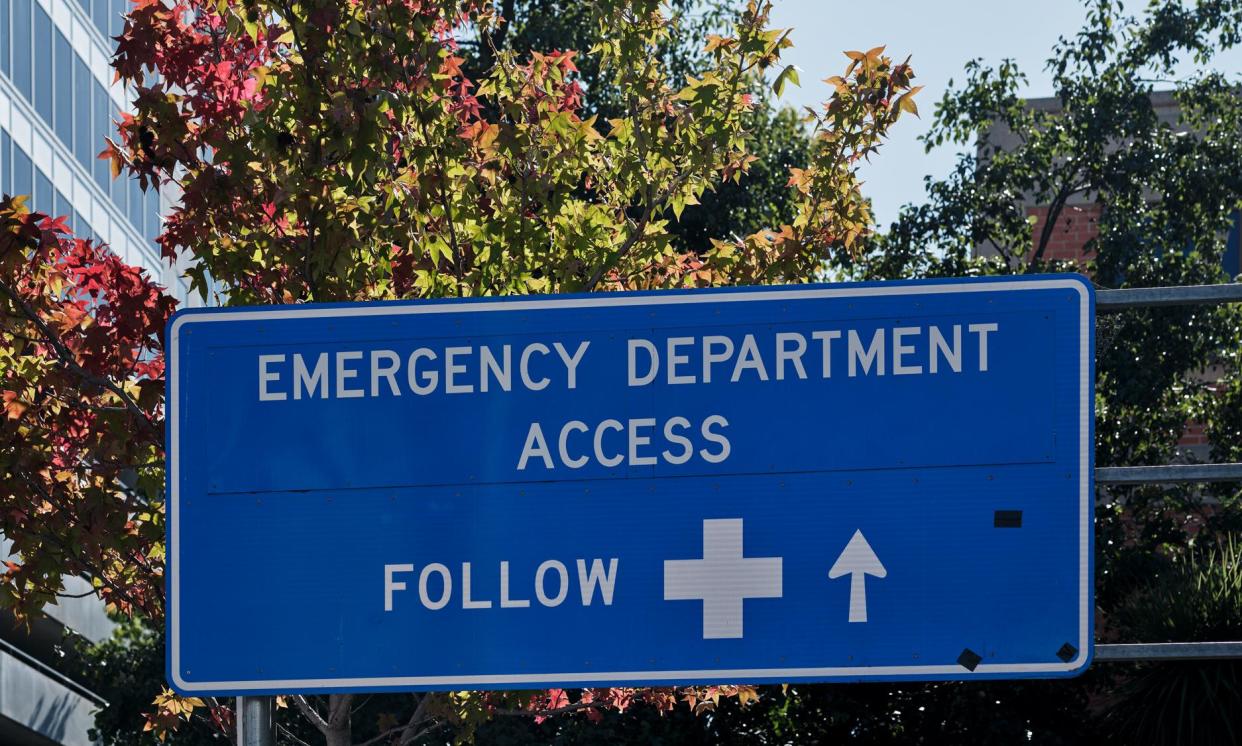Karen has waited for ‘urgent’ surgery since 2022, a painful symbol of Tasmania’s dire health crisis

When Launceston woman Kristy Wagg, 40, had her daughter in 2016 it was a difficult birth – she had a third-degree perineal tear and needed surgery to recover.
“This is where things take a turn,” she said. “I started to not be able to go to the toilet to defecate. The urgency was there but I could just not go.”
By 2019, she was only able to go to the toilet once every 10 days. She went back to the GP, who told her to see a specialist. Then Covid hit and she waited 792 days before she had an appointment. Finally they discovered she had a pocket in her bowel, which stopped her from having regular movements.
In November 2022 she was put on the urgent waitlist for surgery, which means patients are meant to be seen in 30 days.
“To this day, still, I have not been seen,’ Wagg said.
From her GP appointment on 7 November 2019 to 12 March this year, when she spoke to Guardian Australia, Wagg spent 1,587 days on a waitlist.
“Imagine being 40 and … you have anal leakage,” she said. “I am bloated all the time and it’s horrible.”
‘Bugger all’ investment
The state of the health system has dominated Tasmania’s election, with parties rushing to offer policies they hope will persuade voters they can plug the holes and reduce demand.
Health workers say they are exhausted and burnt out. Advocates argue that everyone is doing their best but the system is under immense strain, and in some areas completely broken.
Four of Tasmania’s five federal electorates – Bass, Braddon, Lyons and Franklin – do not have a single bulk-billing clinic, a recent report found, and in greater Hobart the rate was only 1.9%.
Staff retention has become a huge issue as healthcare workers leave seeking better opportunities on the mainland and there are 8,353 patients – including Wagg – on the elective surgery waitlist, a figure that has barely moved in two years.
The state has an ambulance ramping crisis. Last year, a Greens-led inquiry found that, in the four years to 2023, 136 people died in hospital within 24 hours of being ramped for at least 30 minutes.
In 2015-16, fewer than 8% of ambulance patients arriving at hospitals were ramped – now the average is nearly 40%. In 2022-23, an average of nearly 1,800 patients a month were ramped – up from about 300 a month in 2015-16.
Cam Johnson has been a paramedic for 22 years, working in Tasmania for 13 of them. He is based in Kingston, on the outskirts of Hobart.
He said over that time there had been “bugger all” investment in the workforce.
“It’s a lack of expansion investment, a junior workforce, increasing ramping and increasing response times,” he said.
Instead of over a billion dollars going into the stadium, that money needs to go to the housing and health system
Rosalie Woodruff
One paramedic Guardian Australia spoke to, who cannot be named because of the state’s laws restricting public servants from making public comments, described going to work on a recent shift where the patient had waited 13 hours for an ambulance. He had called triple zero with leg pain and turned out to have sepsis. It took three hours to treat him before they got him to the hospital. The paramedic said it was not unusual to do a 15-hour shift.
Johnson, a delegate for the Health and Community Services Union, said his record for ramping was seven hours.
In Launceston, which has the worst ramping rates in the entire country, doctors and nurses were now allowed to treat ramped patients from ambulances, Johnson said.
A system in distress
The health minister, Guy Barnett, recently announced a “ban” on ramping. He promised patients would be transferred from ambulances to emergency in 60 minutes this month, dropping to 30 minutes by 2026, with funding for 79 more healthcare workers to help lessen the load.
He and the premier, Jeremy Rockliff, both declined interview requests from Guardian Australia.
The Greens have campaigned heavily on health, promising 237 extra paramedics and support staff, moving 1,000 existing part-time staff to full-time roles with a $10,00 incentive, and waiving the university debts of 800 new staff.
The party’s leader, Rosalie Woodruff, said there were “distressing things happening in Tasmania’s health system”.
“For the health system to turn around, so people aren’t lying on the floor waiting for triple 0 for hours, and so people can get a bed when they need it, we need to be dealing with staffing shortages, hospital infrastructure flow planning and prevention – keeping people well in the community,” she said.
Woodruff said to raise more revenue the Greens supported cancelling the AFL stadium deal and taxing the state’s big corporations.
“Instead of over a billion dollars going into the stadium, that money needs to go to the housing and health system,” she says.
Labor’s health spokeswoman, Anita Dow, is spending the last days of the campaign door-knocking in her seat of Braddon on the west coast. She says even if Labor wins government “it will take years to repair the health system”.
“It’s going to take years to do that for the damage that’s been done after 10 years of a Liberal government.”
Labor is promising to build a new public hospital, upgrade 18 regional health facilities and six ambulance stations, move 500 healthcare professionals into permanent positions, cover the Hecs debt for 200 nursing and midwifery students, and offer 50 allied health professionals and 40 paramedics a free degree if they stay in Tasmania for three years.
“We’ve also got a plan to employ 88 more paramedics, by mid-next year,” she said. “There’ll be 168 paramedics by 2030 employed across Tasmania under that plan.”

 Yahoo News
Yahoo News 
